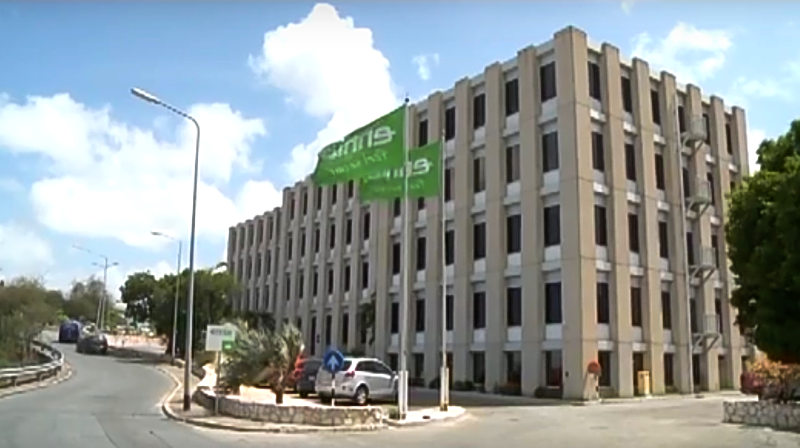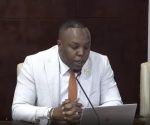Ansary frustrates restructuring of insurance company ENNIA

PHILIPSBURG – Hushang Ansary, the 93-year old Persian-American major shareholder of Parman International B.V. is frustrating the restructuring process the Central Bank of Curacao and St. Maarten (CBCS) has initiated to rescue troubled insurance company ENNIA. This appears from a press release issued by the Central Bank in reaction to what it calls inaccurate media reporting.
ENNIA is a subsidiary of the Parman Group. Last week, the Parman Group took the Central Bank to court in an attempt to stop the emergency ruling the Central Bank issued for ENNIA. The court will pronounce its verdict in this case no later than January 31.
At the Central Bank alarm bells went off when it appeared that under shareholder Parman, ENNIA Caribe Holding and ENNIA Caribe Investments had appropriated 1.5 billion guilders (approximately $838 million) from ENNIA’s policyholders.
According to the Central Bank, this withdrawal puts the interest of policyholders at ENNIA Caribe Life (ECL), ENNIA Caribe Zorg (ECZ, health insurance) and ENNIA Caribe Schade (ECS, general insurance) at risk because the insurer is depending on repayment by the holding and the investment company.
“It is a bad omen that the interest these companies would have to pay to the insurance company is not, or hardly being paid,” The Bank notes.
The stark reality is even worse: The Bank has established that the holding and the investment company are unable to repay the money in full to the insurance company. This is mainly due to the fact that ECI has invested “an important part of the policyholders’ money in a hardly developed parcel of land in St. Maarten that does not generate any income,” the press release states in what must be a reference to Mullet Bay.
ENNIA put the value of Mullet Bay in its books at 771 million guilders (just under $431 million), but according to Cushman & Wakefield – one of the largest and most renowned appraisers in the world – the value is only 89 million guilders ($49.7 million). ENNIA therefore overvalues the property by more than $381 million. In 2016 the world’s largest appraiser CBRE came up with an similar low appraisal. But ENNIA shoved that appraisal aside, the Central Bank states in its press release.
There are more reasons for concern; for instance the way ECI has invested the money it took from the insurance company. The insurers hardly benefit from these investments. In 2005 Ansary established Stewart & Stevenson LLC with the objective to acquire Stewart & Stevenson Inc., a company active in the oil industry. ECI invested money from ECL, ECZ and ECS in Stewart & Stevenson Inc. shares.
In 2017 all shares in this company were sold for more than 1.36 billion guilders (close to $760 million). The ENNIA insurance entities should have received 1 billion guilders ($558.7 million) from this deal because 74 percent of the shares were financed with its money. But they received only 516 million guilders ($282.2 million), thus robbing them of approximately 489 million guilders ($273 million).
The Central Bank established that ENNIA Caribe Life had a solvency deficit of 1.4 billion guilders ($782.1 million) at the end of 2018; at ENNIA Caribe Schade the deficit was more than 35 million guilders ($19.5 million) and at ENNIA Caribe Zorg over 11 million guilders ($6.1 milion); altogether, a solvency deficit of almost $808 million.
For the time being the insurance entities have enough money to meet their obligations towards policyholders but there is a catch: the insurers must get access to funds that are parked at accounts with Merrill Lynch in the United States. The solvency deficit spells trouble in the long run.
Getting access to the Merrill Lynch account is another story; this is where Ansary refuses to cooperate according to the Central Bank.
For years the Central Bank has issued measures against ENNIA in attempts to decrease the outstanding with ECH and ECI and to promote a responsible and diversified investment of policyholders’ money. But even more severe provisions – like quietly putting ENNIA under supervision – did not yield any results.
After negotiations with ENNIA and major shareholder Ansary collapsed, Ansary suddenly gave instructions to withdraw $100 million in policyholders’ money from ENNIA, with plans to withdraw another $150 million afterwards. This is when the Central Bank went to court and got approval to issue the emergency measure against the company.
After the emergency measure was established, the $100 million was returned to ENNIA. The Central Bank notes that $50 million came from a private account belonging to Hushang Ansary. “It seems that Mr. Ansary personally had part of the $100 million at his disposal,” the bank states in its press release.
Merrill Lynch has frozen the accounts in the United States to investigate who is entitled to these funds. “Merrill Lynch keeps the account frozen because Parman and its major shareholder Mr. Ansary did not want to confirm that the Central Bank is entitled to this money based on the emergency measure.”
The value of the investments at the Merrill Lynch accounts dropped by $36 million last week, the day before the lawsuit. The Central Bank says that media reports about a decrease in value by 150 million guilders ($83.8 million) are incorrect. Furthermore the bank notes that this decrease in value only leads to real losses once the investments are sold.
Since the emergency measure was put in place, the Central Bank has obtained a better insight in ENNIA’s financials. “The irregularities we found are currently the subject of further investigation. Those responsible will be held accountable or criminally prosecuted.”
The lawsuit Parman has initiated in Curacao against the Central Bank delays ENNIA’s restructuring process. The Central Bank also has to go to court in the United States to get access to the funds parked at Merrill Lynch. On December 20, 2018, an American court acknowledged the emergency measure in the United States. But the position taken by Parman also delays this procedure, the bank says.
###























